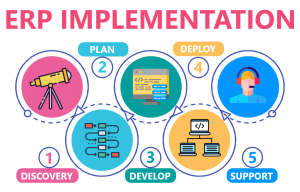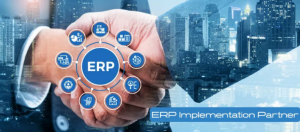Hershey

| Damages Estimated – More Than $150 Million |
When businesses opt to migrate from obsolete legacy systems to a centralized Enterprise Resource Planning platform, the outcome is a delicious success. Unfortunately, Hershey’s was not one of them.
Even though Hershey’s ERP Software catastrophe occurred more than 25 years ago, we may still learn a lot.
If you’re considering your implementation, it’s helpful to understand where this organization went wrong and how to avoid a similar fate, so let’s look at some of the significant concerns.
Learnings from the Hershey ERP Failure!
Where did this project deviate, and why did those deviations have such disastrous consequences? Below are a few pivotal takeaways.
1 – Take your time when testing your systems
Systems testing is one ERP Implementation process that should be retained to the fullest degree. This is an important phase of the trip that cannot be rushed to fulfill unreasonable deadlines.
Rushing things may result in minor issues slipping through the gaps and growing into more significant issues. During the testing phase, we propose investing in the resources needed to make testers feel like they are using the ERP Software in a real-world corporate setting. This allows them to identify as many severe issues as possible.
2 – Plan ahead and allow plenty of time
It’s imperative to do your research with a significant investment like an Enterprise Resource Planning System.
While the Hershey project was supposed to take 48 months, it was completed in just 30. Suppose ERP Project Managers had allotted more time for essential operations like testing and stage-gate reviews. In that case, they could have spotted some problems.
3 – Consider a Phased Rollout
In Hershey’s situation, the shortened deadline was more of a concern than the method of execution. Unfortunately, the company’s big bang strategy did not improve issues.
The organization sought to implement all three systems simultaneously: ERP, CRM, and SCM. While this technique might result in cheaper project costs in some cases, it can also be the commercial equivalent of biting off more than you can chew – especially if the necessary resources are unavailable.
4 – Keep internal scheduling needs in mind
Another issue that contributed to Hershey’s failure? Around the time the system was supposed to go live, business leaders, department managers, and end-users were all preoccupied. It was one of the company’s busiest seasons. They weren’t fully prepared to allocate enough time and resources to important initiatives like ERP Training.
When team members are overworked, communication and collaboration suffer. In Hershey’s instance, the ERP Project was pushed to the back burner as other projects took center stage.
Avoid Hershey ERP Implementation Mistakes
It’s tempting to believe that because Hershey ERP Disaster occurred so long ago, it doesn’t apply to your work project. Nonetheless, a detailed examination of what went wrong demonstrates that specific lessons are ageless.
Are you looking for skilled assistance as you begin your ERP project? Contact our ERP Development Experts at Connected IT Consulting for a quick consultation.



